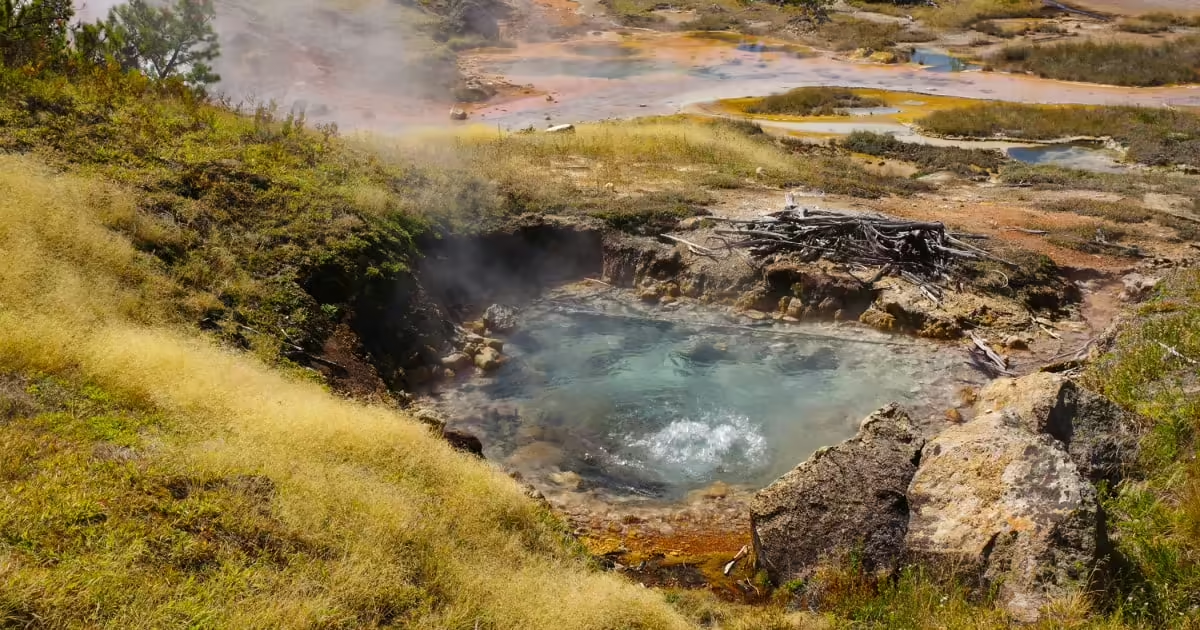Montana State University scientists have provided the first experimental evidence that two groups of microbes recently discovered in thermal springs in Yellowstone National Park produce methane. The groundbreaking discovery could one day help develop methods to mitigate climate change and provide insight into potential life in other parts of our solar system.
Magazine Nature The two scientific papers describe MSU researchers confirming the first known examples of methane-producing single-celled organisms existing outside the Euryarchaeota lineage, which is part of a larger branch of the tree of life called Archaea.
Alison Harmon, MSU’s vice president for research and economic development, said she is pleased that discoveries with such broad potential impact are getting the attention they deserve.
“It is a significant achievement for Montana State University to have not one but two articles published in one of the world’s leading scientific journals,” Harmon said.
Single-celled organisms that produce methane are called methanogens. While humans and other animals eat, breathe in oxygen, and breathe out carbon dioxide to survive, methanogens eat small molecules such as carbon dioxide or methanol and breathe out methane. Most methanogens are strict anaerobes, meaning they cannot survive in the presence of oxygen.
Since the 1930s, scientists have known that many anaerobic organisms in the archaea are methanogens, and for decades they believed that all methanogens belonged to a single phylum, Euryarchaeota.
But about 10 years ago, microbes with methanogenesis genes began to be found in other phyla, including Thermoproteota, which contains two microbial groups called Methanomethylicia and Methanodesulfokora.
“All we knew about these organisms was their DNA,” Hatzenpichler said. “Nobody had ever seen the cells of these putative methanogens; nobody knew whether they actually used methanogenesis genes or whether they grew in some other way.
Experimental validation and methane production
Hatzenpichler and his researchers decided to test whether these organisms could live via methanogenesis, based on the results of a study published last year by one of his former MSU graduate students, McKenzie Lines.
The samples were collected from sediments in Yellowstone National Park hot springs, where temperatures range from 141 to 161 degrees Fahrenheit (61 to 72 degrees Celsius).
Thanks to what Hatzenpichler calls “hard work,” MSU doctoral student Anthony Kotz and doctoral student Viola Krukenberg grew the Yellowstone microbes in the lab. Not only did the microbes survive, they thrived and produced methane. The team then worked to characterize the biology of the new microbes, with the participation of scientist Zachary Jay and other staff at ETH Zurich.
At the same time, a research team led by Lei Chen from the Biogas Institute of the Chinese Ministry of Agriculture and Rural Affairs and Diana Souza from Wageningen University in the Netherlands has successfully grown one of these new methanogens, which they have been working on for six years.
“Prior to our research, no experimental work had been done on these microbes other than DNA sequencing,” Hatzenpichler said.
Cheng and Souza offered to submit the work together for publication, and Cheng’s paper reporting the isolation of another member of Methanomethylicia was published together with two studies from the Hatzenpichler lab.
One of the newly identified methanogen groups, Methanodesulfokora, appears to be confined to hot springs and deep-sea hydrothermal vents, but Methanomethylicia is widespread, Hatzenpichler said. They can sometimes be found in sewage treatment plants and ruminant digestive tracts, as well as in marine sediments, soils and wetlands. That’s important, Hutzenpichler said, because methanogens produce 70 percent of the world’s methane, a gas that is 28 times more powerful than carbon dioxide at trapping heat in the atmosphere, according to the U.S. Environmental Protection Agency.
“Methane levels are increasing much faster than carbon dioxide, and humans are pumping methane into the atmosphere faster than ever before,” he said.
While the experiments answer one important question, they also raise many others that will guide future studies, Hatzenpichler said. For example, scientists don’t yet know whether Methanomethylicia living in non-extreme environments rely on methanogenesis for growth or grow by other means.
“My guess is that sometimes they grow by producing methane, and sometimes they do something completely different, but we don’t know when, how or why they grow,” Hatzenpichler said. “We now need to understand when they contribute to the methane cycle and when they don’t.”
Most methanogens in Euryarchaeota utilize CO2 2 or acetate to produce methane, while Methanomethylicia and Methanodesulphocora use compounds such as methanol. This trait could help scientists learn how to change conditions in different environments so that less methane is released into the atmosphere, Hatzenpichler said.
Future research directions and unique properties of methanogens
This fall, her lab will begin a collaboration with MSU’s Bozeman Agricultural Research and Education Farm, which will provide samples for further studies of methanogens in cattle. Additionally, new graduate students joining Hatzenpichler’s lab in the fall will determine whether newly discovered archaea produce methane in wastewater, soil and wetlands.
Methanomethylation also has a fascinating cellular architecture, Hatzenpichler said. He collaborated with two scientists from ETH Zurich, Martin Pilhofer and doctoral student Nikolai Petrosyan, to show that the microbe forms previously unknown intercellular tubes that connect two or three cells together.
“We have no idea why they form these things. Similar structures are rarely found in microbes. Maybe they exchange DNA; maybe they exchange chemicals. We don’t know yet,” Hatzenpichler said.
The newly published study was funded by NASA’s Exobiology Program. NASA is interested in methanogens because they could provide insight into life on Earth more than 3 billion years ago and the potential for life on other planets and moons where methane has been discovered, he said.













